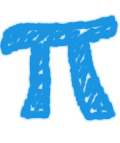Is this a compressed sensing application? - Intrim Report
Date: Mon, Aug 10, 2015
Location: Institute for Mathematics and its Applications
Conference: PIMS-IMA Math Modeling in Industry XIX
Subject: Mathematics, Applied Mathematics
Class: Scientific, Applied
Abstract:
Cyber Optics designs and manufacturers some of the most capable 3D measurement systems in the world. These systems are based on Phase Profilometry, and sample a large amount of data, to construct a single 3D Height Image. The ratio of data collected to data output can be as high as 30 to 1. This process of sensing massive amounts of data and outputting a small fraction of the sensed data, is a common problem in sensor design. In the past decade a new branch of mathematics and sensor design has emerged called compressed sensing that specifically addresses this problem. In compressed sensing the sensor designer exploits these massive compressive ratios to “sense” a more limited data set.
My team will determine the feasibility of compressed sensing as applied to the Cyber Optics Phase Profilometry sensor. I (the presenter) have no experience with compressed sensing, but I have 4 years of experience working with phase profilometry, and 20+ years working as a mathematician in industry. We will explore the literature of compressed sensing, and present a “go – no-go” analysis of phase profilometry to my management. That is, we will attempt to address the question, “can compressed sensing be used to reduce the data collection requirements of our sensors by at least an order of magnitude”?



